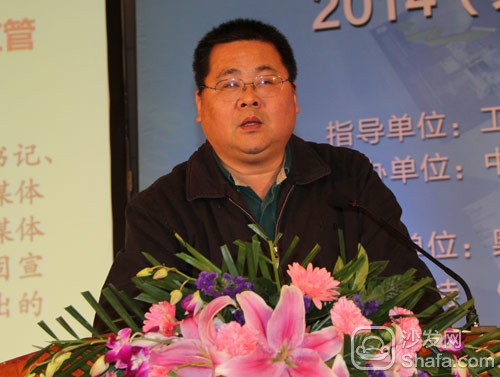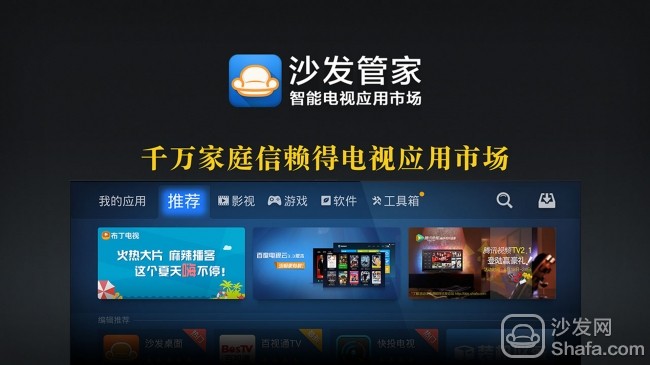On December 5, 2014, the 2014 (10th) China Audio & Video Industry Technology and Application Trend Forum ("AVF Forum") was held in Beijing Jingyi Hotel. This forum closely follows the development trend of the industry, with the theme of “new new leap in new normal modeâ€, based on the forefront, starting from hot spots such as 4K ultra-high definition, smart, big data, and smart home, focusing on the core of domestic and global audio and video industry. Technology, product, application and emerging market areas; in-depth summary and analysis of the audio and video industry and the development of digital television, and the grand recognition of innovative products, technologies and applications, in order to promote the audio and video industry chain construction, and then promote the Chinese sound The all-round development of the video industry achieves mutual benefit and win-win through collaboration.

Mr. Wang Haiping, a research fellow of the Institute of Broadcasting and Television Planning Institute, brought a keynote entitled “Status and Trends of Internet TV Industry Development.†The following is the full text of the speech:
Wang Haiping: Leaders, colleagues in the industry, everyone good morning! First of all, I would like to thank the Visual Arts Association for giving me this opportunity to communicate with everyone.
Speaking of the status quo of the development of the Internet TV industry, I feel that there are two layers of meaning for the development of the broadcasting industry. One layer of meaning is to promote the development of media integration, and there is another layer of meaning. Broadcasting and television should strengthen the mainstream thinking paradox. In recent days, the National Reform Leading Group has adopted guidance on promoting the integration of new media and emerging media. The General Secretary stressed that it is necessary to focus on building up a variety of competitive emerging mainstream media and build several new models that have strong powers for dissemination and credibility. Media Group, this is an important policy background for the development of the new media industry.
Because it seems to Radio and Television that the development of new media is not just an issue of industrialization. What is more important is a platform for public opinion work. The guiding opinions of the Party and the government have played a huge role in promoting the development of the new media industry and are supported by national policies. In the meantime, traditional media and emerging media can make full use of their respective advantages to blend in with each other, which is expected to open up new growth space for the media industry.
The year 2014 will be over and the new year will come. I think radio and television should be promptly followed up in the use of new media. In content production and control, we must dare to take the initiative to speak out. The management mechanism must be actively and effectively optimized. Can we give the country a demand for radio and television, that is, promoting the positive energy of society and creating a good new media media ecology.
The Internet OTT policy and supervision as early as in 2007, the Ministry of Industry and Information Technology and the SARFT issued such requirements, in the Internet audio-visual program services should be in accordance with this provision, obtain the information network dissemination license issued by the competent authority, did not obtain a permit or perform the record Procedures are not allowed to engage in Internet audio-visual services. This is a policy in 2007.
In December 2011, it issued the requirements for the operation and management of an Internet TV license agency.
In 2013, the General Administration of China issued the No. 1 Document of 2013, requesting that the Internet radio and TV station be promoted to an equal position with the development of radio and television stations, and encourage the director of the station to serve concurrently. The system implements three levels of integration from top to bottom.
On April 23, 2014, Liu Qichen proposed the requirement of “accelerating the integration of traditional media and emerging mediaâ€. During the previous two days, the General Administration of Administration held a speech at the audio-visual conference. The traditional media could not meet the principle issue and the new media could not reach it.
On August 28th, 2014, the central government deepened the reform leading group and the fourth meeting reviewed and adopted the Guiding Opinions on Promoting the Integration and Development of Traditional Media and New Media.
As you can see from this map, in May 2010, CCTV International Academy of Astronautics and Shanghai BesTV recorded a joint drafting of the revised Internet TV technical specification system. The second level of the overall system is the broadcast control integration platform. This platform requires The broadcaster of the content should be linked to the integration platform, and it should be bound to the user terminal when it is transmitted to the user terminal. This is after the technical specification. This picture basically describes the implementation of a technically guaranteed national policy for new media requirements.
This is the Internet TV OTT institutional structure and license policy. This picture shows a few lines. It is clear that the first-tier program information service platform is a licensee, and the licensees stipulated by the Broadcasting and Television Corporation are to communicate content signals with the Internet TV integration platform. The integration platform and the Internet electronic terminal equipment should be a binding relationship and cannot be cross platform. Terminals cannot cross platforms. This is a management requirement and specification.
In other words, an Internet TV client can only embed a TV integration platform address to establish a secure and reliable Internet TV program service platform for content service license agencies.
Currently, there are 7 units of Internet TV OTT integrated license content licenses. One is CCTV International, one is Hangzhou Huaji, one is Shanghai Wenguang, Southern Media, Hunan Television, China International Radio, and Central People's Broadcasting Station. This is signed by the General Administration of Administration of China. 7 content license units.
Speaking of the OTT operating model, there are probably two international models. The first European model takes into account the traditional broadcast television and OTT service HBBTV model.
The United States has made an open OTT model based entirely on the Internet architecture.
What to do in China? In China, under the controllable and controllable mode of emphasizing content supervision, the state-owned broadcasting and TV institutions provide video content, controllable and manageable services through the public Internet, and accept terminals as Internet TV integrated and set-top boxes.
Internet TV operates on video websites. Video websites have the unique advantages of OTT. There are a large number of video resources. There are exclusive network copyrights for self-portraits and original content. The advantages of content resources make video websites an indispensable force for Internet TV. The video website relied on the website's own programs to build a content platform and launched an internet TV terminal. For example, LeTV launched the LeTV Box T1 in April 2011. In July 2013, LeTV Super TV was launched. In April 2014, the X50 was launched, and LeTV was tied to content providers by radio and television. LeTV and China International Radio reached a strategic cooperation intention. This is in line with the policy requirements of the Directorate General.
With the operation of Internet TV OTT, local TV stations in the OTT area, the No. 1 of the General Administration of Administration of the People's Republic of China on promoting the development of mainstream media to network radio and television stations requires Internet radio and television stations to promote the same position as TV stations. Reflect the passive and active attitude of broadcasting and television.
TV stations around the world now set up the main profit model of network television, online video advertising profit, video on demand profit, users share, traffic profit. It is required that local stations must create their own characteristics to create profits.
The operation will increase the broadband access from 2013 to 2015 for telecom operators. After the implementation of the broadband China strategy, urban households will access broadband 20 trillion and farmers 4 trillion in 2015. Video applications such as OTT will grow in the future, broadband operators will actively deploy OTT services, and secondly, steadily. IPTV plus Internet TV hybrid development mode means that telecom operators can integrate IPTV and Internet TV concentration platforms in one terminal, and users can choose private network IPTV services to switch to Internet TV content on the same terminal.
The Internet OTT operates radio and television operators. In order to achieve the control of content, the SARFT issued the Regulation No. 181 of the Internet Television Regulatory Policy. Local cable TV operators are relatively conservative. Faced with the impact of Internet channels on cable TV, Internet TV's Internet TV model is a key attempt. The OTT market is also expanding. This is no longer detailed.
From the 2007 policy to the 2014 General Administration of Administration and the national release policy, it can be seen that the OTT regulatory policy has become increasingly stringent. I don't speak one by one in these words.
Set-top box and one machine require three aspects. One can only connect Internet TV integrated broadcast control platform. The address embedded in the second terminal embedded Internet TV broadcast control platform must be completely bound. Authorized by the Third General Administration.
From the point of view of overall development, the development of OTT terminals has begun to move toward a convergence of terminals. This trend is responsible for content, and the telecommunications department is responsible for network provision. This policy environment guides the development of IP television and mobile TV mobile TV services, and actively expands emerging Market and user base. Understanding of converged terminals, we consider this to be the application of the Internet of Things as a support. Because TVs have a unique location in the family living room, the basic supporting platform for Internet TV in the future can be linked to home networking, home automation, smart education, smart fitness, food safety, and Internet of Things applications and Internet TV technology platforms.
In the end, we should have a wide field of vision for broadcasters, and we should have a great future in order to have a better development. There is something wrong with this. It is hoped that leaders and elites present here will criticize and correct me. This is my contact method. I hope that the research work in the future will get everyone's support and help. thank you all!
Recommended installation sofa butler Download: http://app.shafa.com/
